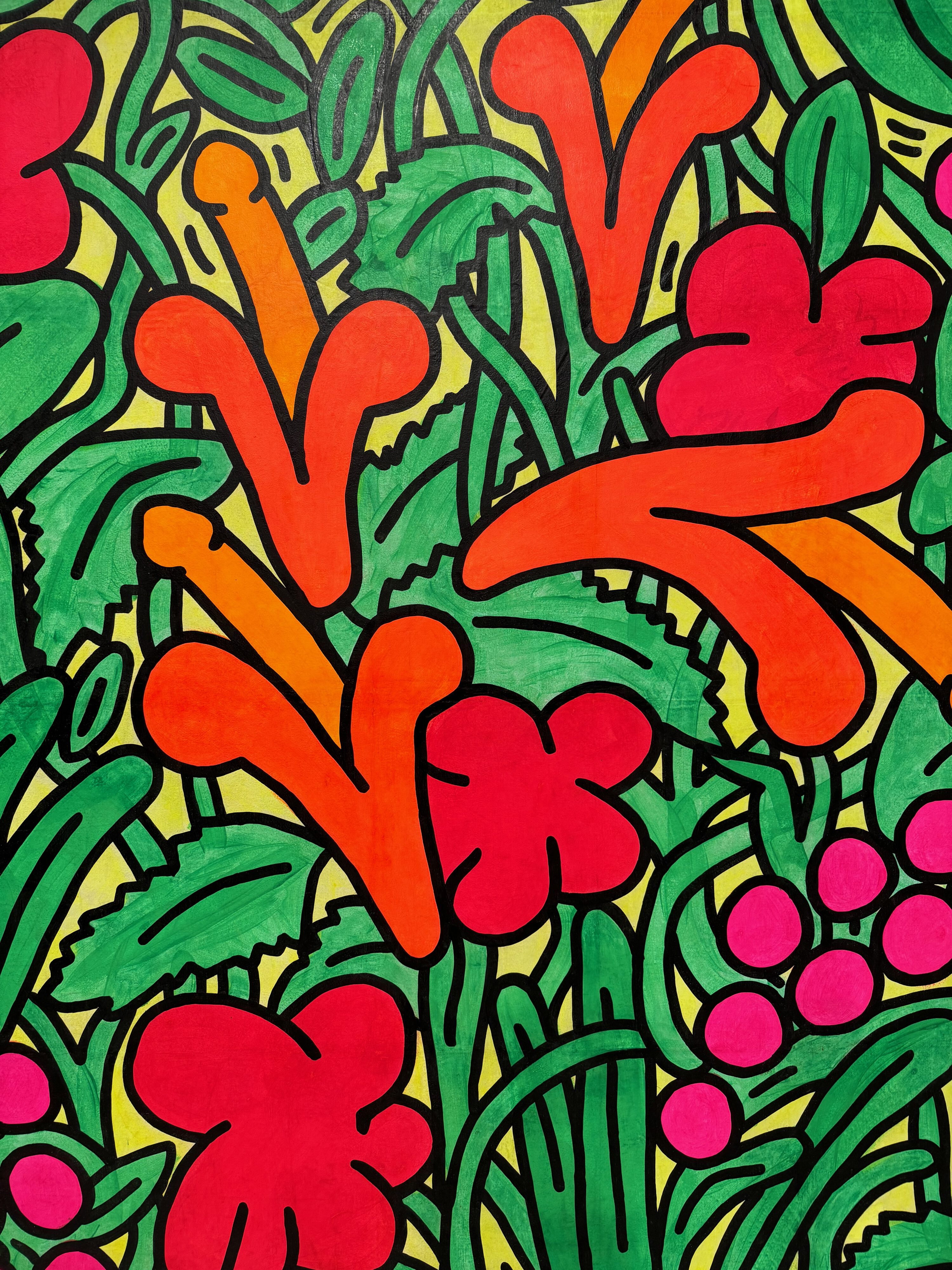
The Moco Museum is an independent museum with a wide range of inspiring modern, contemporary, and street art – located among others in Barcelona, Spain. Moco exhibits Jean-Michel Basquiat, Banksy, KAWS, Keith Haring, Damien Hirst, Yayoi Kusama, Hayden Kays, David LaChapelle, Guillermo Lorca, Takashi Murakami, Nick Thomm, Andy Warhol, Studio Irma, and so many more!
KAWS, whose real name is Brian Donnelly, is a contemporary artist known for his distinctive style that merges elements of street art, pop culture, and fine art.
KAWS draws inspiration from popular culture, incorporating familiar icons and characters from cartoons, comics, and advertisements into his artwork. He often remixes and reinterprets these cultural symbols, infusing them with his own unique style and commentary on consumerism and mass media.
In addition to his paintings and prints, KAWS creates large-scale sculptures and installations that blur the boundaries between fine art and popular culture. His sculptures often depict distorted and exaggerated versions of familiar characters, inviting viewers to reconsider their perceptions of art and nostalgia.
Pyramid Connect by Town and Concrete (alias Cyril
Lancelin) @mocomuseum
Cyril has developed a hybrid technique consisting of sculptures, immersive installations, drawings, virtual experiences and videos that combine the physical with the fictional.
The French artist combines architecture and the human body, the everyday and the functional, the perpetual and the ephemeral, science and nature. His immersive artworks are often sculptures that involve the viewer. Shapes and movements change as you enter the work and world of Town & Concrete. Whether digital or real, his works offer an essentially optimistic vision of an artificial and experiential landscape.


David LaChapelle is a renowned American photographer known for his surreal and vibrant imagery, often blurring the lines between fine art and commercial photography. His “Last Supper” series is a contemporary interpretation of the iconic biblical scene, featuring various pop culture figures and themes. LaChapelle’s work often critiques consumerism, celebrity culture, and societal norms, using vivid colors and extravagant compositions to convey his messages. The “Last Supper” series reflects his unique style and approach to art, merging religious symbolism with contemporary iconography.
Keith Haring was an American artist and social activist known for his iconic graffiti-inspired artwork, which emerged in the New York City street art scene of the 1980s. “Garden of Radio Delights” is one of his notable works, created in 1985 as a mural for the Collège LaSalle in Montreal, Canada. The mural features Haring’s signature bold lines and vibrant colors, depicting various whimsical characters and symbols. Haring’s artwork often conveyed social and political messages, addressing issues such as AIDS awareness, apartheid, and urban decay. “Garden of Radio Delights” is a celebration of life and creativity, reflecting Haring’s belief in art as a powerful tool for communication and social change.

Julian Opie is a contemporary British artist known for his distinctive minimalist style and use of digital technology to create artworks that explore themes of identity, perception, and representation. Here’s more about Julian Opie and his work:
Digital Portraiture: Opie is best known for his digital portraits, which are characterized by simplified forms, bold outlines, and flat colors. He often reduces his subjects to essential elements, using geometric shapes and minimal details to capture their essence. His portraits are influenced by the visual language of contemporary media, such as signage, advertising, and digital graphics.
Walking Figures: One of Opie’s most iconic series features walking figures rendered in his signature minimalist style. These figures are often depicted in motion, with simplified body shapes and animated movements. Opie explores themes of urban life, movement, and anonymity through these stylized representations of pedestrians.
Public Art Installations: Opie’s work extends beyond traditional gallery settings, with many of his artworks installed in public spaces around the world. His large-scale sculptures and digital installations can be found in parks, plazas, and urban environments, where they engage with the surrounding architecture and landscape. These public art projects invite viewers to interact with the artwork and experience it in a new context.

One Reply to “MOCO Barcelona”
Comments are closed.